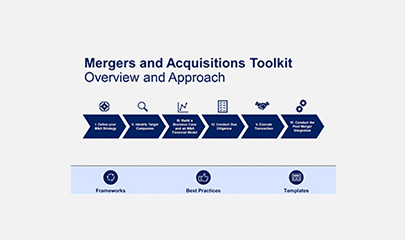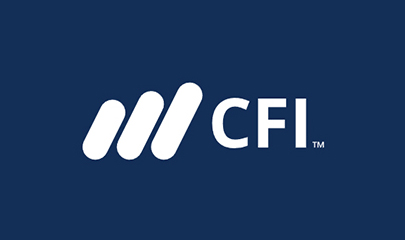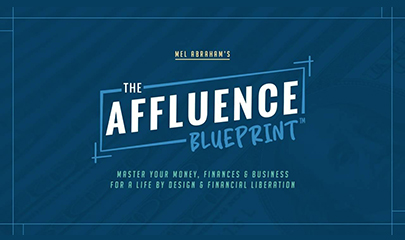-
×
 Bond Market Course By The Macro Compass
1 × $15,00
Bond Market Course By The Macro Compass
1 × $15,00 -
×
 MovNat Core Curriculum Bundle By MovNat
1 × $194,00
MovNat Core Curriculum Bundle By MovNat
1 × $194,00 -
×
 AI NSFW Mastery - Unlock the Secrets of AI Porn! By Only AI
1 × $23,00
AI NSFW Mastery - Unlock the Secrets of AI Porn! By Only AI
1 × $23,00 -
×
 Jay Campbell’s Positive Muscle Failure Video Training Program
1 × $46,00
Jay Campbell’s Positive Muscle Failure Video Training Program
1 × $46,00 -
×
 Secrets Of Subtle Sales Mastery Deluxe By Paul Ross
1 × $23,00
Secrets Of Subtle Sales Mastery Deluxe By Paul Ross
1 × $23,00 -
×
 Mergers and Acquisitions Toolkit By Domont Consulting
1 × $23,00
Mergers and Acquisitions Toolkit By Domont Consulting
1 × $23,00 -
×
 Ecommerce merchandising By Naheed Adil
1 × $39,00
Ecommerce merchandising By Naheed Adil
1 × $39,00 -
×
 Beginner Forex Mastery Course By Harrison Uwah - MHU FX Academy
1 × $78,00
Beginner Forex Mastery Course By Harrison Uwah - MHU FX Academy
1 × $78,00 -
×
 6th Dimension Lifetime Access By Elisa Canali
1 × $23,00
6th Dimension Lifetime Access By Elisa Canali
1 × $23,00 -
×
 Oral Sex Mastery by Pleasure Mechanics
1 × $69,00
Oral Sex Mastery by Pleasure Mechanics
1 × $69,00 -
×
 Your Most Profitable Quarter Yet By Alyssa Coleman
1 × $23,00
Your Most Profitable Quarter Yet By Alyssa Coleman
1 × $23,00 -
×
 The Complete Guide to Multiple Time Frame Analysis & Reading Price Action By Aiman Almansoori
1 × $13,00
The Complete Guide to Multiple Time Frame Analysis & Reading Price Action By Aiman Almansoori
1 × $13,00 -
×
 6 Steps to Great Leadership (Videos Only) By John Demartini
1 × $54,00
6 Steps to Great Leadership (Videos Only) By John Demartini
1 × $54,00 -
×
 Weightless Wealth By Elisa Canali
1 × $31,00
Weightless Wealth By Elisa Canali
1 × $31,00 -
×
 CFI Self-Study (All Courses) By CFI Education
1 × $124,00
CFI Self-Study (All Courses) By CFI Education
1 × $124,00 -
×
 Conscious Cashflow Triad By Jesse Elder
1 × $101,00
Conscious Cashflow Triad By Jesse Elder
1 × $101,00 -
×
 The Be More Persuasive Hypnosis 5-Pack By Uncommon Knowledge
1 × $15,00
The Be More Persuasive Hypnosis 5-Pack By Uncommon Knowledge
1 × $15,00 -
×
 The Others Within Us - Unattached Burdens and Guides in IFS Therapy By Robert Falconer
1 × $69,00
The Others Within Us - Unattached Burdens and Guides in IFS Therapy By Robert Falconer
1 × $69,00 -
×
 Accents and Dialects Master Class By Eliza Jane Schneider
1 × $62,00
Accents and Dialects Master Class By Eliza Jane Schneider
1 × $62,00 -
×
 The Indices Orderflow Masterclass By The Forex Scalpers
1 × $23,00
The Indices Orderflow Masterclass By The Forex Scalpers
1 × $23,00 -
×
 Behavioral Couples Therapy With Richard Stuart
1 × $8,00
Behavioral Couples Therapy With Richard Stuart
1 × $8,00 -
×
 Fitness Business Essentials Bundle By Carroll Performance
1 × $458,00
Fitness Business Essentials Bundle By Carroll Performance
1 × $458,00 -
×
 The 13 Week Cash Flow Model By Matan Feldman - Wall Street Prep
1 × $54,00
The 13 Week Cash Flow Model By Matan Feldman - Wall Street Prep
1 × $54,00 -
×
 The World Was Never the Same: Events That Changed History By Rufus Fears
1 × $5,00
The World Was Never the Same: Events That Changed History By Rufus Fears
1 × $5,00 -
×
 Yoga Nidra - Yogic Sleep By Yoga International
1 × $39,00
Yoga Nidra - Yogic Sleep By Yoga International
1 × $39,00 -
×
 Convology Pro - All Access Membership
1 × $23,00
Convology Pro - All Access Membership
1 × $23,00
ESG Disclosure By Derek Young – CFI Education
$15,00
ESG Disclosure: An In-Depth Review by Derek Young – Digital Download!
Let’s embark on a captivating adventure to uncover remarkable insights that spark your curiosity and elevate your understanding
ESG Disclosure By Derek Young – CFI Education
Overview

ESG Disclosure: An In-Depth Review by Derek Young
In the modern corporate world, the importance of transparency, accountability, and sustainable practices has never been more paramount. Derek Young’s work titled “ESG Disclosure” delves into the intricate landscape of Environmental, Social, and Governance (ESG) disclosures, elucidating how these practices have evolved amidst increasing scrutiny from investors, regulators, and the public. This thorough examination not only highlights the motivations behind corporate ESG disclosure but also considers its implications for both firm integrity and investor confidence. As more companies are compelled to disclose their sustainability efforts, understanding the nuances and complexities of this communication becomes crucial for stakeholders navigating today’s economic environment.
The Motivations Behind Corporate ESG Disclosure
Transcending Traditional Reporting
At its core, corporate ESG disclosure serves multifaceted purposes that transcend traditional financial reporting. Firms today are driven to document their environmental stewardship, social responsibility initiatives, and governance practices not merely out of obligation but as a strategic enhancement of their value proposition. Young adeptly highlights motivations that guide these disclosures, including:
- Improving Transparency: Today’s investors are increasingly cautious, craving transparency as a means to evaluate risks and opportunities effectively.
- Building Trust: In an era where consumer trust is dwindling, companies are relying on ESG disclosures to bolster their credibility, fostering greater confidence among stakeholders.
- Mitigating Risks: By openly addressing ESG controversies, firms can better navigate potential pitfalls that could impact their reputation and finances.
This transition from a mere compliance-focused approach to an integrative strategy exemplifies a paradigm shift in how corporations engage with their social and environmental responsibilities. Rather than viewing ESG disclosures as a tick-box exercise, savvy companies recognize these practices as valuable tools for enhancing stakeholder relationships, ultimately leading to long-lasting loyalty and support.
The Role of Regulatory Frameworks
As Young emphasizes, the landscape of ESG disclosure is rapidly transforming due to regulatory interventions worldwide. Mandatory disclosure regulations are being introduced, requiring firms to provide detailed reports outlining their sustainability efforts alongside traditional financial disclosures.
- Legislative Examples:
- The European Union’s Non-Financial Reporting Directive mandates large companies to disclose relevant ESG information.
- Similar guidelines are being adopted in markets such as the UK and Australia, underscoring a global trend towards accountability in corporate practices.
These regulatory changes compel organizations to move beyond mere rhetoric, necessitating concrete, verifiable actions towards sustainable practices. Young’s analysis suggests that with increased scrutiny, companies are incentivized to adopt authentic ESG initiatives rather than superficial strategies intended solely for compliance.
Navigating the Complexity of ESG Ratings
Discrepancies in ESG Ratings
In pursuing robust ESG disclosures, companies encounter the intricate universe of ESG ratings. Young effectively points out that the complexity surrounding these ratings can create significant challenges for investors attempting to assess corporate performance. Divergent methodologies and criteria employed by rating agencies often lead to substantial discrepancies in ratings for the same company.
- Common Rating Agencies:
- MSCI, Sustainalytics, and Refinitiv, among others, utilize varied approaches to evaluate corporate ESG performance.
This inconsistency can confuse investors, creating a landscape where they’ve difficulty discerning which companies genuinely adhere to sustainable practices and which merely engage in “greenwashing.” Young’s research illustrates that companies experiencing lower ratings might not necessarily be underperformers; instead, they might be penalized for the lack of comprehensive disclosures or variations in rating agency methodologies.
Impact on Decision-Making
The disparity in ESG ratings deeply influences investment decisions. Many investors are increasingly integrating ESG factors into their portfolio strategies, believing that companies demonstrating strong ESG practices can potentially mitigate risks and yield better long-term returns. However, erratic ratings can lead to misallocation of capital, with investors inadvertently supporting firms whose practices do not align with their ethical values.
To address these issues, Young advocates for standardized rating frameworks that could unify disparate methodologies, making it easier for investors to navigate the ESG landscape. Just as the world operates with universally accepted financial accounting principles, a comprehensive ESG framework could level the playing field, ensuring accurate comparisons and assessments of corporate performance.
Linking ESG Disclosure to Financial Performance
Empirical Evidence of Value
In his comprehensive analysis, Young lays forth compelling empirical data that links robust ESG disclosure practices with improved financial performance. Several case studies demonstrate that firms with transparent ESG practices not only gain investor trust but also often enjoy reduced capital costs, improved operational efficiency, and increased market competitiveness.
Consequently, the relationship between effective ESG disclosure and a firm’s bottom line can be conceptualized as a virtuous cycle. Enhanced transparency mitigates investor risk, resulting in not merely a boost in firm reputation but also tangible financial benefits, as illustrated by:
- Case Study Examples:
- Company A, with high ESG scores, reported a 15% increase in stock performance over a three-year period.
- Company B, which improved its ESG reporting and practices, successfully attracted $150 million in green bonds.
These examples substantiate Young’s assertion that a commitment to authentic ESG practices can yield dividends for organizations willing to embrace transparency, aligning ethical considerations with financial ambitions.
The Corporate Landscape
Navigating the current corporate landscape requires a delicate balance between fulfilling investor demands for transparency and addressing the ethical implications tied to ESG performance. Young’s research indicates that as investors increasingly prioritize sustainability in their decision-making processes, companies ignoring ESG factors may find themselves at a competitive disadvantage.
The unfolding reality suggests a future where successful businesses are those that not only capture economic value but also cultivate social and environmental value. Firms increasingly recognize that their longevity and relevance hinge on their ability to adapt to changing expectations surrounding corporate responsibility and sustainability.
Conclusion
In summary, Derek Young’s “ESG Disclosure” serves as an enlightening guide through the evolving landscape of corporate responsibility and transparency. By dissecting the motivations underpinning ESG disclosures, exploring the complexities of ratings, and linking these practices to financial performance, Young advocates a critical introspection for firms striving to align their operations with stakeholder expectations. As the demand for transparency intensifies and regulatory frameworks solidify, the companies that prioritize genuine ESG efforts will likely emerge as leaders, cultivating trust and loyalty in a world increasingly governed by the principles of sustainability and corporate ethics.
Frequently Asked Questions:
Innovation in Business Models: We use a group purchase approach that enables users to split expenses and get discounted access to well-liked courses. Despite worries regarding distribution strategies from content creators, this strategy helps people with low incomes.
Legal Aspects to Take into Account: Our operations’ legality entails several intricate considerations. There are no explicit resale restrictions mentioned at the time of purchase, even though we do not have the course developers’ express consent to redistribute their content. This uncertainty gives us the chance to offer reasonably priced instructional materials.
Quality Control: We make certain that every course resource we buy is the exact same as what the authors themselves provide. It’s crucial to realize, nevertheless, that we are not authorized suppliers. Therefore, the following are not included in our offerings: – Live coaching sessions or calls with the course author.
– Entry to groups or portals that are only available to authors.
– Participation in closed forums.
– Straightforward email assistance from the writer or their group.
Our goal is to lower the barrier to education by providing these courses on our own, without the official channels’ premium services. We value your comprehension of our distinct methodology.
Be the first to review “ESG Disclosure By Derek Young – CFI Education” Cancel reply
You must be logged in to post a review.

















Reviews
There are no reviews yet.